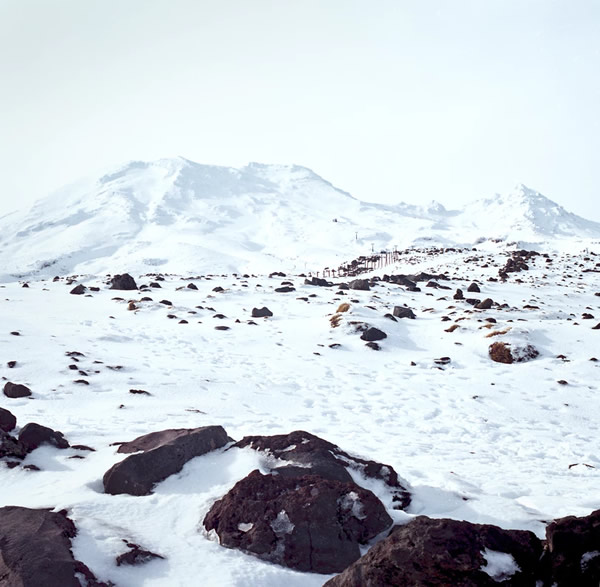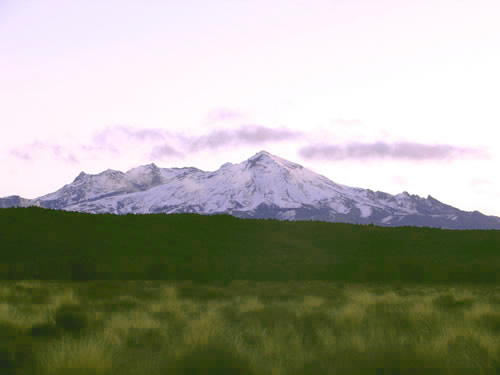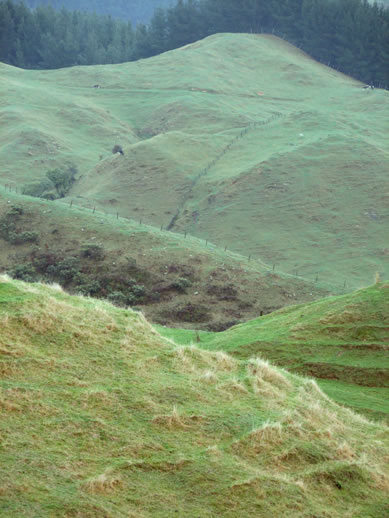Work Abroad in New Zealand: Making Snow in the Summer
Story and photos by Robert Norton

|
|
Mount Ruapehu covered with snow.
|
It's June. The temperature outside is way below freezing, the wind is piling snow up against the break room windows, and I'm finishing my fourth cup of instant mochaccino while trying to stay warm. If you love the mountains and want to experience an endless winter or have never been on a ski lift but want to spend your summer learning to snowboard, working on Mount Ruapehu in New Zealand might be for you.

|
|
Mount Ruapehu from the Desert Road. Photo by Robert Norton.
|
Mount Ruapehu is in the middle of the North Island and part of Tongariro National Park, a UNESCO World Heritage Site that also includes Mt Tongariro, Mt Ngauruhoe, and the Tongariro Northern Circuit — one of New Zealand’s Great Walks. There are two developed ski fields on Mount Ruapehu, Turoa and Whakapapa, and they are both operated by Ruapehu Alpine Lifts Limited (RAL).
RAL accepts job applications on their website and includes detailed descriptions of the available positions. If you have ski resort experience, you will probably qualify for more than one, improving your chances of getting a job.
Visa Requirements for Work in New Zealand
I chose to work as a snowmaker for two reasons: some snowmakers work the graveyard shift, which gave me plenty of time to snowboard during the day, and I was too old to qualify for a visa under the working holiday scheme. Here is the deal: you need a visa to work in New Zealand, and there are two ways to get one: qualify under the working holiday scheme or apply as a skilled migrant.
To qualify for a visa under the working holiday scheme, you must be 18–30 years old, have some cash (about US$3200), with no kids tagging along. New Zealand has an excellent immigration website, so you can review all of the working holiday scheme conditions and even apply for a New Zealand visas online.
Since I was 31, I have had to obtain my visa as a skilled immigrant. This meant that RAL had to help me sponsor my visa, and this option was only available to snowmakers and ski/snowboarding instructors. If you do not qualify for a visa under the working holiday scheme, check the RAL website for information on which positions offer visa assistance.
Turoa Versus Whakapapa
When you apply for a position with RAL, you can choose to work at Whakapapa or Turoa. Both resorts offer similar terrain and mountain services, but their locations differ. Turoa is just up the mountain from Ohakune, a town of about 1,400 full-time residents with a grocery store, several bars and restaurants, and Mardi Gras, a street party in late June that kicks off the snow season. Whakapapa, on the other hand, is relatively isolated. When I was in the States, I lived in a downtown apartment in a large city, so I preferred the busier nightlife of Ohakune.
Things to Consider When Working and Living at RAL
-
The weather on Mount Ruapehu is temperamental. If you desire blue skies and deep and dreamy powder to have a good time skiing or riding, the conditions on Mount Ruapehu may drive you crazy. But do not fret, as there will be some beautiful days. Nonetheless, due to the wind and clouds, do expect partial or complete mountain closures at times as storms roll through.
-
Many of the jobs at RAL are physically demanding. As a snowmaker, I spent much time trudging around in deep snow, lugging heavy objects, and digging things out. Make sure you are up for a physical challenge.
-
Most of the employees are between 18 and 25 years old. This means the bars are lively and busy, especially on paydays, so if you are done with excesses of youthful exuberance, there might be better choices for you.
Tips On Taking the Plunge
-
RAL provides you with a uniform, which includes outerwear and fleece. Nevertheless, I recommend purchasing warm gloves or mittens, thermal underwear, some additional fleeces, and maybe even a down jacket while still in the States. Outdoor clothing is expensive in New Zealand, and it is nice to have extra clothes to stay warm when the weather is raging. Also, you can only wear your uniform when working, so bring your own clothes for skiing or snowboarding.
-
If you are assigned to Turoa, Ohakune is a resort town, so it is not cheap. Check out the classified board in the grocery store for rental postings. And remember, the earlier you get to Ohakune, the easier it will be to find a place to stay. If you are assigned to Whakapapa, there are staff dormitories and information about them on the RAL website.
-
New Zealand is beautiful, so buy a van or car and see it all if you can. Mount Ruapehu is centrally located on the North Island. You can take weekend side trips to Lake Taupo, Rotorua, New Plymouth/Taranaki, Napier, Gisborne, or Wellington to escape the snow. I bought a van from the Backpackers Car Market in Auckland, which was great because they took care of the paperwork and offered insurance.

|
|
Rolling grass hills on the road between Ohakune and Napier. Photo by Robert Norton.
|
Robert Norton was a technical writer at a software company before escaping to New Zealand for a year.
|
